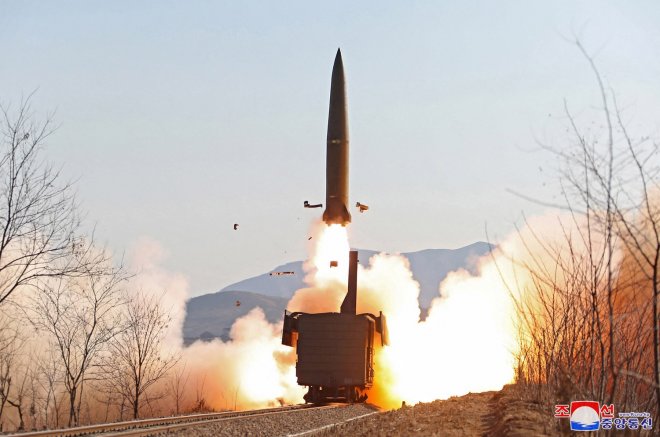
North Korea’s record breaking single-day barrage of more than 20 missiles cost the impoverished country more than U.S. $70 million, or as much as it spent importing rice from China in 2019 to try to cover grain shortages that year, experts told Radio Free Asia.
Pyongyang on Wednesday launched 23 missiles, one of which crossed a disputed maritime border, ratcheting up tensions on the peninsula. On Thursday, it launched six more, including an ICBM, and observers anticipate that North Korea’s seventh nuclear test could happen soon.
The short-range missiles fired on Wednesday likely cost between $2 million to $3 million each, Bruce Bennet, an adjunct international defense researcher at the California-based RAND Corporation, told RFA’s Korean Service.
“You"re talking about something between $50 and $75 million,” he said, adding that Pyongyang likely chose to use surface-to-air missiles in the Wednesday barrage because they cost less than medium or long-range missiles.
That’s about as much as North Korea spent on all its imports from China for the month of August this year, or the total cost of rice imported from China in 2019, data from China’s General Administration of Customs showed.
The $70 million splurge in a single day showed that North Korean leader Kim Jong Un prioritizes missile and nuclear weapons development over the welfare of the people, said David Maxwell, a senior fellow at the Washington-based Foundation for Defense of Democracies.
“Kim Jong Un is expending resources and money, to test missiles and build his advanced military capabilities and this is, of course, responsible for the great amount of suffering among the Korean people living in the North,” he said.
Choosing weapons over people was one of many ways authorities in the country were committing human rights abuses and crimes against humanity, he said.
“So every missile that he launches,” Maxwell said, “takes food from the mouth of the Korean people in the North.”
Translated by Leejin. J. Chung. Written in English by Eugene Whong.
